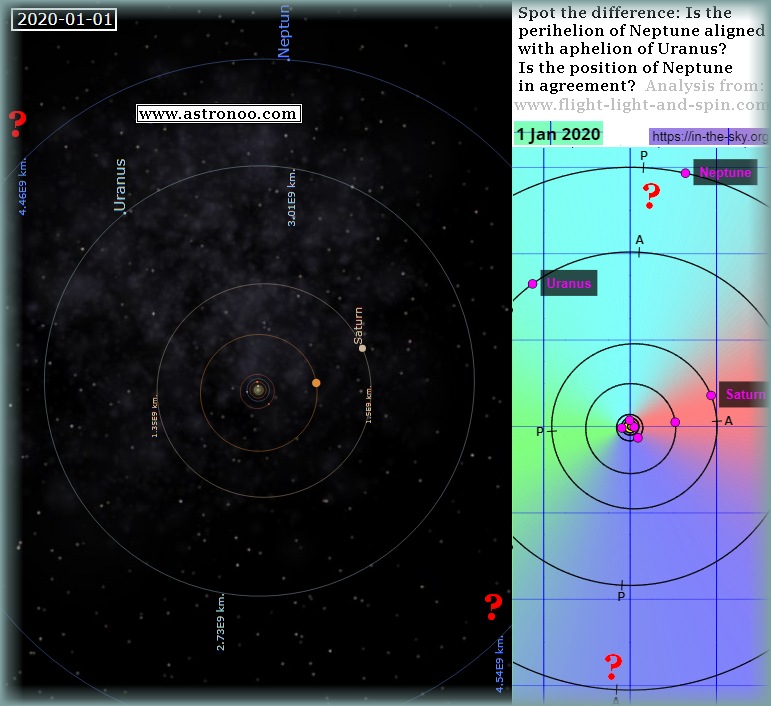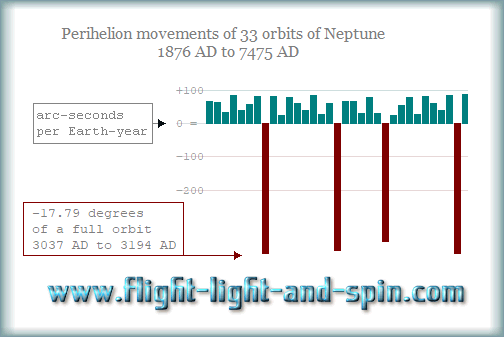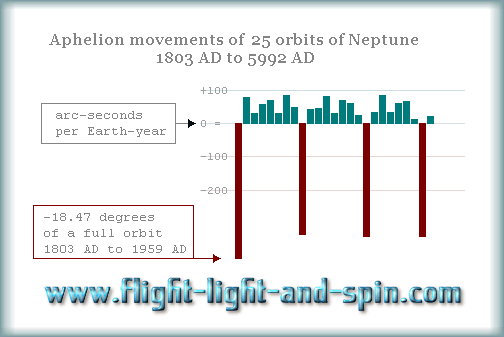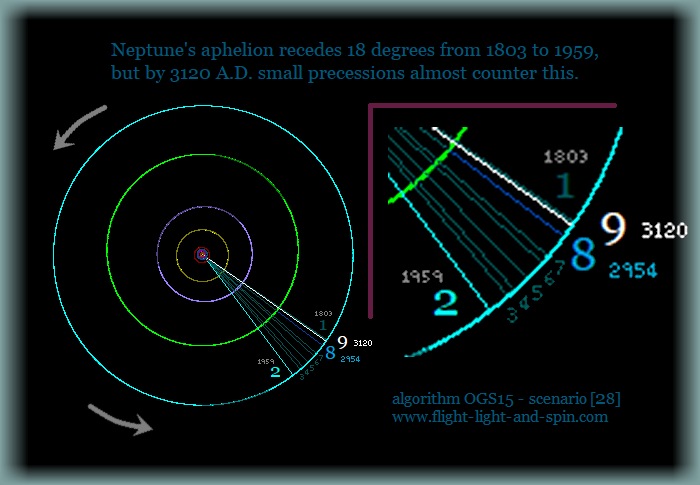Its
vital to see that because we are comparing 8
movements between pairs of aphelion, we are calculating the
1st jump in the image from 1
to 2 (1803
AD to 1959 AD) then the 8th
jump is between orbit 8
and 9 (2954
AD to 3120 AD)
The large gray arrow indicates the direction of movement of
the various planetary orbits. Now just compare this image
to the images from the two websites at the top of this page.
We can easily see how large the variation in the aphelion
position is for Neptune. (Just note that you need to rotate
the image around 180 degrees in your mind).
But
it is abundantly clear just how vague the concept of an average
is - unless you evolve an 3D-n-body algorithm,
and then display a graph over many thousands of years.
Scenario
[60] of OGS15 is a control
test with just Neptune and the Sun. This is because OGS12
demonstrated that large time quanta will cause a recession
to the major axis without any other planets effecting the
orbit. So this scenario is required to show that this inaccuracy
is only -0.0072
as/Ey when unaffected by other planetary gravity.
So Scenario [60] should be compared to Scenario
[28] in this regard as they both operate
at 15000 virtual seconds per iteration.
I have not had the processing power to properly run Scenario
[38], which will certainly calculate an error-margin
10x better, taking 10x longer
at 1500 virtual seconds per iteration. If
you have such power (or time), it would be fairly easy to
run Scenario [38] of OGS15
to reveal a more accurate answer to Neptune's apparent recession
to its aphelion and perihelion. I would be interested to know,
and would be able to update my results accordingly. Though
it may take a week or more to properly compute 25
orbits (or more!) of Neptune at this rate, as required.
If you do wish to partake in this free study, please contact
me at the Cosmologos 21
forum here: cosmology.africamotion.net





